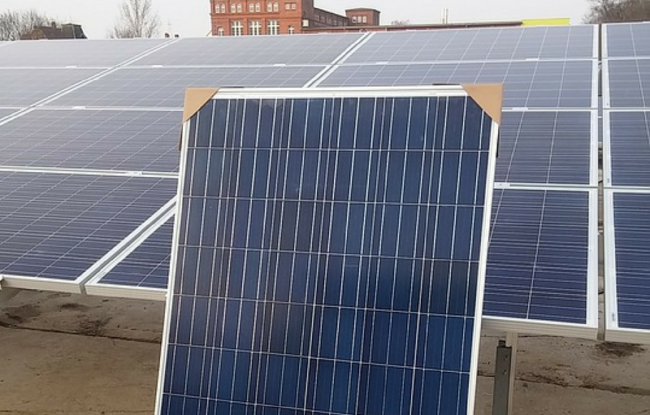In a recent conversation with a PV industry executive, I heard a common refrain about the U.S. PV market. “We are not factoring in significant growth in the U.S. market in the near term. It has disappointed us over the past few years as analysts and marketing personnel forecast gigawatt levels of demand.” Another comment was “Given trends in the industry, especially recent pricing trends, do you really think the US will show significant growth in the next couple of years?”
This presents me with a dark conundrum. By all logical rights, the U.S. market is blest with great solar resources, strong demand, and the ability to pay for PV power plants. Yet we’ve seen slow growth compared to the rest of the world. Will this change?
A World Awash in Modules
You bet.
Let me lay out the story that I see in the PV market and some fundamental assumptions before I discuss the PV market specifically:
- Demand – 2010 has been a phenomenal year for the industry. The German market, as well as others boomed. Yet Germany has and is revising its incentives, with a particular impact on farms. Thus Germany should go from about 7.5 gigawatts this year to 5 to 6 next year. Furthermore, we should have the normal industry cycle in 2011, with a slow Q1
- Shipments – PV shipments are at an all time high. Vendors’ guidance for first quarter 2011 shipments remain steady. Yet we are seeing signs of excess capacity build up that will impact as the slow season starts.
- Pricing – Although PV vendors are sanguine about their ability to maintain pricing in the first half of 2011, in talking with developers and financiers, I get a sense these customers think pricing is too rich. Especially for the first half of 2011.
- Investors – Furthermore, as we look at the FiT reductions proposed, if prices just dropped slightly, investors might have to settle for low rates of return. Yet when I talk with investors, they have a significant set of options open to them, especially in the energy industry. If PV projects rates of return are not attractive, they can just migrate their money into other areas.
So what does this mean for the USA?
Looking in My Crystal Ball – Can It Really Be Growth I See?
If pricing drops as we expect it to in the first quarter of 2011, we should see strong incentives align for the U.S. PV market. Figure 1 shows our view the segments that will drive the U.S. market to finally become a multi-gigawatt market.
We expect the U.S. Market to reach 2.6 gigawatts of installations by 2012. Yet notice that we are factoring in a bit of a change in the market. The blue and the red shaded areas highlight the current core of the market in the enterprise and the residential sectors. Yet looking at the future of the PV market, we see a significant level of activity by customers in the utility sector, which we break down in to 3 sections – all highlighted in grey.
The projects may be 0.5 to 5 MW roof top projects or sub 30 MW substation scale projects or the large central scale projects. Gartner forecasts that this part of the market will be the dominant growth area within the U.S. market for the foreseeable future. And this market will reward PV modules firms who have developed a services mentality and have strong project development capabilities and strong engineering capabilities.
But is this growth possible? Some key points for you to consider:
- Incentives – While we do not expect a federal policy in the near term, we see 29 states with RPS policies. This provides us with a broad spectrum of incentives and requests for proposals for PV projects across the U.S.
- Enterprise – This market is composed of commercial, government, academic, non-profit and similar customers. Although we have seen a bit of a hit in the commercial market, especially in California, we still have significant levels of interest by commercial, municipal and state entities. In addition, the Obama administration is actively promoting renewable energies, and solar figures prominently in its policies. You should read the recently released “Procuring Solar Energy: A Guide for Federal Facility Decision Makers.” And note the recent announcements of contract wins with the military and other federal agencies.
- Utility Rooftop – This segment is of major interest, since these projects tend to be “relatively” shorter-turn-around PV systems from a permitting and interconnection basis. With both a PPA and an “utility-owned” aspect to it, we expect to see this type of program expand in the USA, but the near term opportunities remain with PG&E and SCE in California. SCE’s recent announcement included PPA from firms as diverse as SunEdison, Solyndra’s Photon division and Tioga Energy.
- Utility Substation Scale – These are the 1 to 30 megawatt scale projects. We have seen significant levels of interest here, with utilities across the country starting to release projects to comply with their RPS requirements. We see utilities releasing projects to a very broad range of players (First Solar, SunEdison, Eurus Energy, LS Power, FRV, Iberdrola are just some of the examples. A more interesting point here is that quite a few utilities have established divisions that are going after this market. These include PSEG Solar Source, Duke Energy Generation Services, Constellation Energy and more.
- Utility Central Scale – This may be the holy grail of the U.S. PV industry, but it is still in its infancy. Quite a few companies are going after this market segment, both established PV firms and start ups in the project development and the PPA space. From a deals and pipeline perspective, the leaders appear to be First Solar and SunPower at the moment, but with Sharp’s acquisition of Recurrent Energy, we may see more competition at the large scale.
Now I do not think that all of the announced projects are real. We have to discount a large number of them since so many of them are being developed by firms who do not have adequate experience – or more importantly – money. Yet even after we discount a large fraction of the utility projects announced, we see a robust pipeline.
This foundation makes us optimistic that the time for the U.S. market to grow has arrived. We expect the U.S. PV market to reach 2.6 gigawatts by 2012 in the current environment.
Conclusion
The US market not only provides us with a clear growth story, but it is still full of potential for new entrants. The competitive landscape is mixed. First Solar and SunPower have invested strongly in EPC capabilities and a large pipeline, particularly at the large scale. Other firms such as Q-Cells International, BP Solar have been working in this space. Sharp’s acquisition of Recurrent Energy gives it an interesting potential.
Yet no firm dominates. And the possibilities in each segment remain open. Many utility roof-top and sub-station scale projects are yet to be announced. The enterprise market presents very strong opportunities, especially in the Federal Government sub-market. Residential continues to remain strong.
This is why I think the time for the U.S. PV market has finally arrived.
Alfonso Velosa is a Research Director at Gartner Inc. focused on the photovoltaic solar market.



